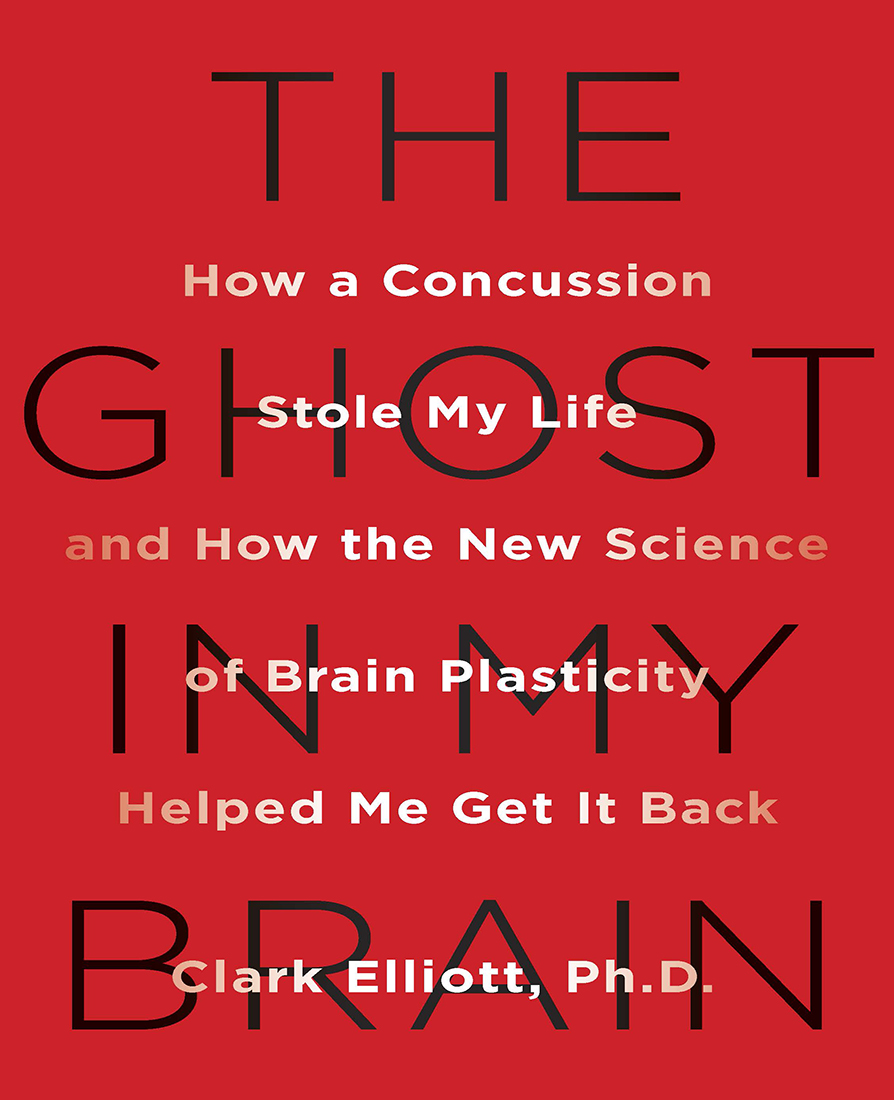
The Ghost in My Brain
How a Concussion Stole My Life and How the New Science of Brain Plasticity Helped Me Get it Back
چگونه ضربه به زندگی من آسیب وارد کرد و چگونه علم جدید انعطافپذیری مغز به من کمک کرد تا آن را پس بگیرم
کتاب های مرتبط
- اطلاعات
- نقد و بررسی
- دیدگاه کاربران
نقد و بررسی

April 13, 2015
Elliott, an associate professor of artificial intelligence at DePaul University, delivers a harrowing account of a 13-year-long recovery from a disabling concussion that changed his life, and celebrates the science that came to his rescue. The journey of recovery began more than two years after an auto accident, but Elliott’s “sense of isolation” grew early on, he writes, when an emergency room doctor declared that “everything looks fine” even though he was barely functional. Elliott couldn’t move without someone commanding him, had difficulty making simple choices, and was unable to do more than one thing at a time. “I grew quite crafty about avoiding cognitive and sensory activities that drained my batteries,” he writes. The real recovery started through his partnership with Donalee Markus, a cognitive specialist, and Deborah Zelinsky, an optometrist who focuses on neuro-optometric rehabilitation. Building on recent research into brain plasticity, the doctors taught Elliott mental “exercises” and the use of a special set of corrective lenses he calls “brain glasses” to regain cognitive functioning. In time, he rediscovered “the me that could think, and feel,” declaring: “I was, at last, and once again, human.” Elliott’s transformative tale will be invaluable for patients with traumatic brain injury, families, and caregivers.

April 1, 2015
Up-close view of living with the harrowing effects of a concussion by a professor of artificial intelligence who kept thorough notes of the experience and shares what he learned about overcoming his severe disabilities. When Elliott (DePaul Univ.) was concussed in a traffic accident, he soon discovered that the medical community, including neurologists, was ill-prepared to either recognize or treat the injury to his brain. Here, the author documents his medical encounters and what it was like living for years with a badly damaged brain-he had difficulties with balance, body sense, muscle control, memory, walking, hearing, seeing, eating, sleeping, his sense of time, and making decisions, plus seizures, nausea, and pain. He felt, he writes, like an alien living among humans. As he notes, the suicide rate among concussion sufferers is high. The previously high-functioning Elliott not only reveals his own brain's limitations after the accident; he also examines the workings of a normal, healthy brain. Years after the injury, he learned of the work of Donalee Markus, a cognitive restructuring specialist working in the Chicago area. Markus used paper-and-pencil, context-free visual puzzles to help Elliott regain his cognitive functioning skills, and she referred him to Deborah Zelinsky, an optometrist who used a progression of nontraditional therapeutic eyeglasses to alter the way the brain conveys visual/spatial signals to the visual cortex. As the author explains, both approaches utilize the amazing plasticity of the human brain. Details of their approaches constitute the book's final portion, and both women have provided informative forewords describing their work. Happily, under their programs, the author made large strides toward normalcy. With concussions from sports injuries making the news, Elliott's easy-to-read account of his experiences is a valuable contribution to a better understanding of the condition.

June 1, 2015
Elliott's memoir of life after a traumatic brain injury (TBI) is noteworthy on two counts. First, it is testament to the advice given in a speech by British Prime Minister Winston Churchill to never give in, never give in, never, never, never. Because it was by sheer dint of will and determination that Elliott even survived the devastating effects of a concussion, much less carried on with the demands of his work as a university professor and his life as a father while also renovating his home. The fact that he persevered for eight years even as medical professional after medical professional told him he must learn to live with his severe disabilities goes well beyond the norm. Second is his experience with the groundbreaking science of brain plasticity. The account of how his fractured brain learned how to work around its injuries is all but astonishing. Though the research he illuminates is new, the practice is becoming more widely documented. Aside from patches of academic language, Elliott's impressive and instructive memoir is an engaging and worthy read.(Reprinted with permission of Booklist, copyright 2015, American Library Association.)

























دیدگاه کاربران